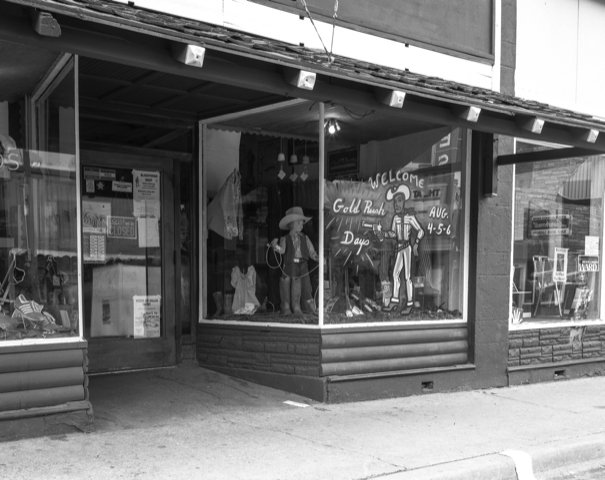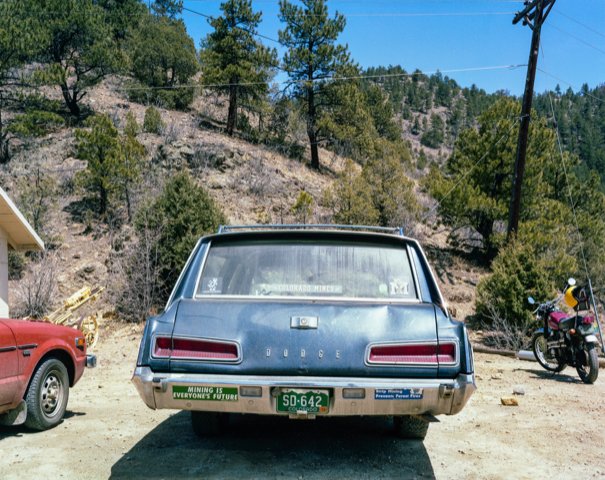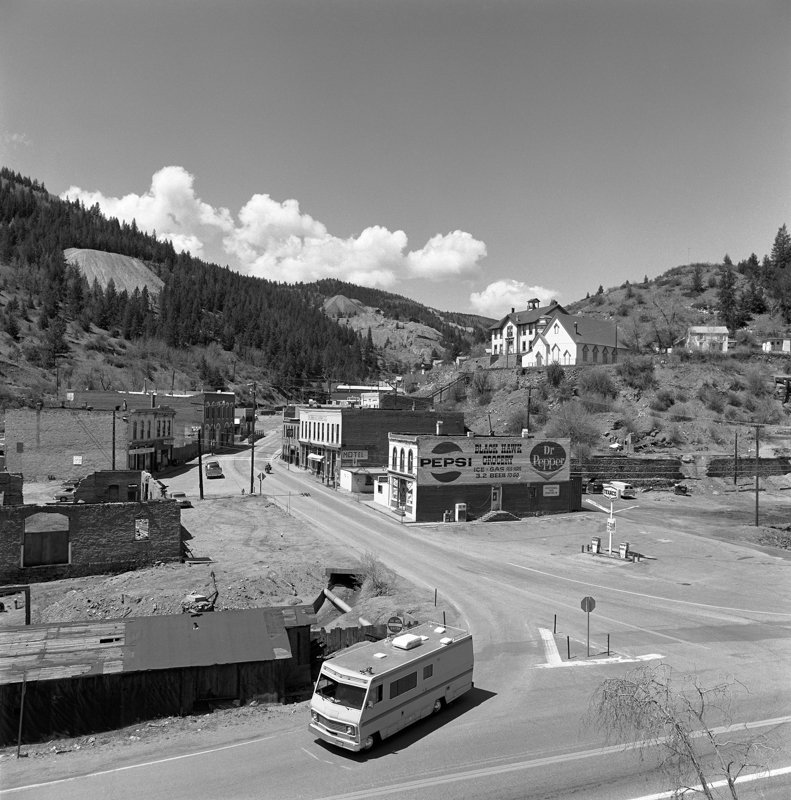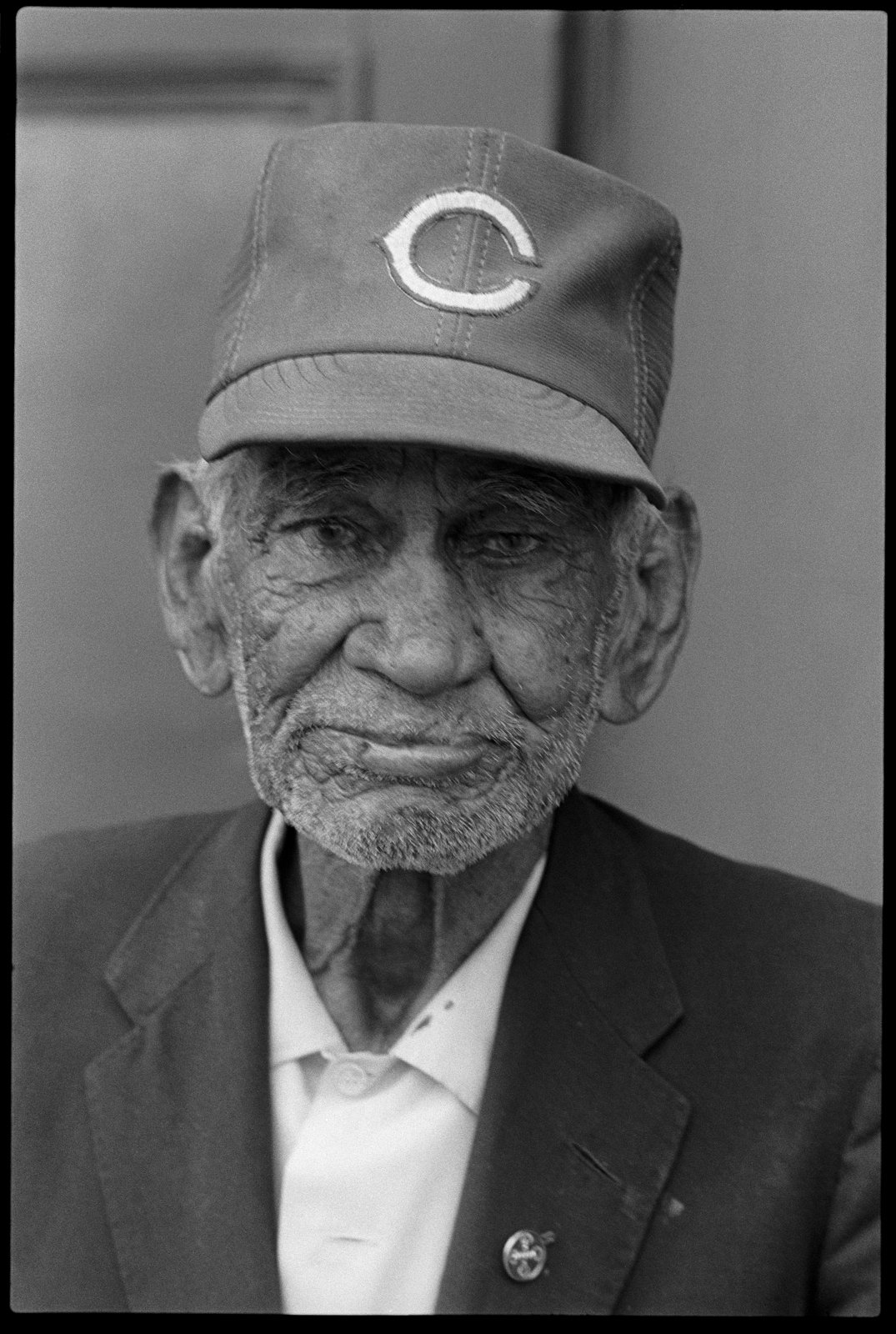Any evaluation of photography’s contemporary history in Colorado foregrounds three women—Cherie Hiser, Barbara Houghton, and Ruth Thorne-Thomsen—whose influence in the field of photo education initiated radical shifts in teaching, learning, and artmaking beginning in the late analog era—to be precise, 1968, with Hiser founding the Center of the Eye workshops in Aspen.
Houghton is a revered photo instructor and artist who arrived in Denver from Chicago in 1974. Hired on a three-year tenure track, Houghton became Denver’s first female photo faculty member. She served as Professor of Art/Photography and Electronic Media at Metropolitan State College (now University) from 1974 to 1992. As she describes it, she adopted a curriculum that was dominated by an incomprehensible (to her) Zone System. Her immediate response was to throw restrictions to the wind and encourage experimentation with materials and ideas. In subsequent years she introduced video technology and computer imaging to her department and to her own art making.
This post is the first of two parts. Part Two will concentrate on her video and digital media work.
RJ: Tell me about your background and introduction to photography.
BH: I grew up in a huge family in the 1950s. I was the second oldest of twelve kids and we were really lower middle class. My dad was a car mechanic and he took care of us. We were poor but happy. I don’t remember going to museums, but I started taking art classes in high school and my mother always drew. She would always say, “Don’t be an artist—you’ll cut off your ear.” She really didn’t want me to go that way, but I did anyway because I was rebellious kid.
I went to a junior college—first in my family to graduate from college. I was more interested in drawing, but the woman who taught the classes was recruiting for a photography class and this boy that I liked said, “I’m going to take it so why don’t you?” So I signed up for the class and bought a darkroom set up and put it in my parents’ canning room in the basement.
Above L-R: undergraduate portrait, ca. 1971, photo by Michael Pevin; with Irene Mitkus, ca. 1972, photographer unknown; Andrea Jennison and Tom Breedon, nd, photo by Barbara Houghton; Robert Heinecken, near Evergreen, Colorado, c. 1975, photo by Barbara Houghton.
After junior college I transferred to the University of Illinois in Chicago and I studied with Joe Jachna and Hans Schaal, Bob Stiegler. All my teachers were Bauhaus people. When I graduated in 1971, I went to the School of the Art Institute on a full scholarship for my MFA. It had a great faculty. At the Institute I worked with Joyce Neimanas, Keith Smith, Sonia Sheridan, Bonnie Donahue, Ken Josephson, and Frank Barsotti; Barbara Crane was my advisor.
Above: "Correspondence Piece," 1972-73, silver gelatin print sewn in vinyl with letter and map, 4 x 5 inch.
My friend Judith Golden was an undergrad when I was a grad student, and we started doing all this research into color toning, hand-coloring, and sewing, and there was a real connection in how we worked. She left for grad school at Davis. That’s how the Correspondence series (1972–73) started. I would write her and stitch it all up and she would send me something back and I would say, “This is weird, I just sent you something just like this.” Printing on fabric was not out of the ordinary and I loved cyanotypes.
For We Were Very Crowded When We Lived in His House (1972), I made a plexiglass box that was like a little ant farm—inside was a printed etching on cloth and that I quilted, and next to it I filled a space full of little cyanotype dolls. It was autobiographical. Most of my work then was about who I was.
“We Were Very Crowded When We Lived in This House,” 1972. Plexiglass case with sewn photo etching on satin and stuffed sewn cyanotype dolls on cotton, 12 x 12 x 0.5 inch.
The idea of moving to Denver seemed pretty exotic to me. I had never lived anywhere but Chicago. Denver was away from Chicago and Judith always said that “West was best.” Little did I know that when I got there it really was not exotic yet! That first year [at Metro] taught me more than I had ever learned in school. I knew things technically, but the conceptual stuff came together like an explosion.
When I arrived I was this punk little girl. Students didn’t like me so much at first. I didn’t do photographs like Edward Weston. I hand-colored, I stitched, I didn’t follow those West Coast traditions, and I didn’t understand the Zone System. I would go into class and talk about ideas, but my early students wanted to talk about technique, not ideas. Eventually, when they graduated, I had kick-ass students like John Priola and Mark Sink, Jay di Lorenzo, Merlin Madrid, Jim Cannata, and more. They were outstanding and pushed me to be better.
Colorado, ca. 1977. L-R: Linda Connor, Barbara Houghton, Andrea Jennison, Richard van Pelt, Bonnie Lambert, Ellen Manchester, Sandy Hume, Cal Sparks.
RJ: Soon after you arrived you helped curate Photography: A Women’s Show (1975) at Zach’s restaurant, which was a popular hang-out for artists. I imagine women photographers were very underrepresented in Colorado at the time.
BH: Judy Thorpe, who is at UConn, Lynne Brown, and a woman named Freddie Wright, who was a PR person, wanted to do this show in order to have some visibility. They were part of a group, or a photo club, and they asked me to help them put the show together. Colorado was quite a bit the man’s place in photography then, but these women were not only driven to do their work, they also wanted some validation. I think Ellen Manchester, who just arrived in Denver from Visual Studies in Rochester, was also one of our jurors. We got Anne Noggle to come up from Albuquerque to be the juror and the show was pretty successful.
It was an expansion time in photography and I was a part of that as an active member of the Society for Photographic Education. Almost every summer I helped write grants and organize workshops and gatherings with Ellen Manchester, Kenda North, and Andrea Jennison at Colorado Mountain College up in Vail, then Breckenridge. We’d do those workshops with lots of visiting artists. The photo community was very close and shared our resources and energy.
“Window Slip,” nd.
RJ: I did see a review of your work at Zach’s written by Jack Kunin for the Rocky Mountain News [11/16/75]. It was beyond glowing, calling you “perhaps the most important photographer in this region.” Considering that was written within a year of your arrival, you obviously made an immediate impression, both as a facilitator and as an artist.
BH: It might have been very easy to be the “most important” woman in photography in the region because I was the only woman who taught. I met Jack through Cal Sparks and Jean Schiff. Jack was a writer and art historian and taught at University of Denver with Cal. Jean Schiff taught drawing with me.
RJ: Kunin wrote that your self-portraits “comprise a record of one individual’s transcendence of her alienation.” In retrospect, do you have any thoughts about that?
BH: I don’t think I was feeling alienation, but it was the first time in my life that I was living without my family near, and at that point my husband left for grad school in Washington State. I was growing my wings. My new photographs may have seemed mysterious because they were shot with infrared film and have that glowing look to them.
Below, Left: from “Lingerie in the Landscape”; Bottom Row: Hambone: work uniform with patches, work boots, fake fur Russian hat, heavy leather work belt, tools in pocket,” 1983, 11 x 14 in., silver gelatin print, from “What We Wear.”
RJ: Clothing is a recurring theme in your work from the late 1970s. For instance, during a residency at Light Work in Syracuse in 1978, you made a quirky series of portraits of young men displaying favorite items of lingerie, and there was a series titled What We Wear of people posing in their everyday clothes.
BH: I did the Light Work series in Syracuse from the middle of January to the middle of February 1978. I was still working on Lingerie in the Landscape then. The guys at Light Work thought that I knew all about snow because I lived in Colorado. Well, I didn’t know about the amount of snow they had—it was too deep to go out in. I got into snow over my head one day when I fell through the crust, so I was indoors after that. All these cute boys who lived in the dorm would come down to see what was going on, so I just recruited them. I let them choose a piece to display for me. I had them stand in front of a chalkboard that was in a nearby classroom. I labeled it “young men displaying lingerie of their choice to the camera/photographer.” It got published in Light Work’s anniversary book a couple of years ago.
The other series, What We Wear, were 4 x 5 camera portraits shot straight on and describing what my subject was wearing. I was interested in how what you wear gives people their first impression of who you are. I chose to shoot in black-and-white to make the clothing more generic rather than define any specific piece.
Above: from Women’s Flimsy Things; cyanotype. 3rd from left: Bra, Bra, Black Sheep, 1975, cyanotype with color gum bichromate on paper sewn in vinyl with black wool teats at bottom of print. 23 x 30 in.; far right: Four Section Dress.
RJ: Back in Colorado in 1978, you collaborated with Sandy Hume on a landscape survey project called From This Land. That seems like quite a departure for you.
BH: It was a departure. We got a National Endowment for the Arts Photographic Survey Grant in 1978. We hired other photographers to document with us. They were Robert Adams, Ron Wolhauer, Roger Mertin, Gary Metz, Linda Connor, Richard van Pelt, and Bill Clift, with Sandy and I filling in. We were looking at mining in the West and the residues from it, and how it was damaging the land and water.
We looked at oil and coal and silver, gold, and copper mines with the tailings and the tourist towns that grew up around them. There was a lot of talk about what was going on in the mountains, ecology and stuff. We’d see tourist mines all the time going up the mountains to Breckenridge or Vail. Ellen Manchester (at Colorado Mountain College), JoAnn Verburg, and Mark Klett had written a grant for the Rephotographic Survey Project that year, so both our projects were done the same time. Our project wound up at the Colorado State Historical Society photography collection [now History Colorado].
End of Part One. Part Two will be posted early January 2022.
Above: “From This Land’” 1978. Top to Bottom: Barbara Houghton: Gold Rush Days, Idaho Springs, Barbara Houghton, Idaho Springs, David Freund (Roger Mertin photographing), Richard van Pelt.
All images by Barbara Houghton unless otherwise noted. All images are courtesy of the artist.
Please leave a comment, and “Subscribe” to receive notices of new posts. Visit “ColoradoPhotoHistory” on Instagram and Facebook to see more images.


















